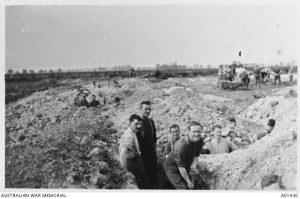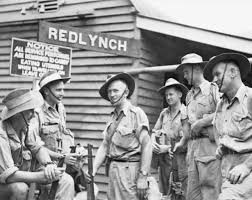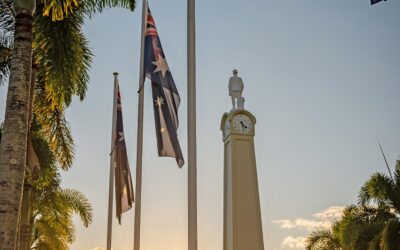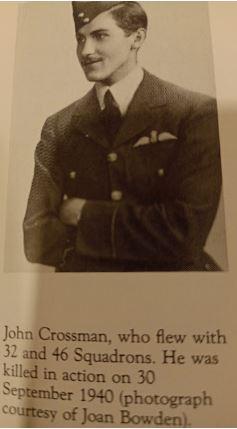With only two weeks until ANZAC Day, have you ever wondered why a Dawn ceremony or where did the the Gunfire Breakfast tradition come from? In this blog we talk about all ANZAC Day traditions and how they came about. If you have any other questions regarding ANZAC Day traditions, leave us a comment.
THE ODE
The Ode comes from For the Fallen, a poem by the English poet and writer Laurence Binyon and was published in London in The Winnowing Fan: Poems of the Great War in 1914. The verse below, which became the Ode for the Returned and Services League, has been used in association with commemoration services in Australia since 1921.
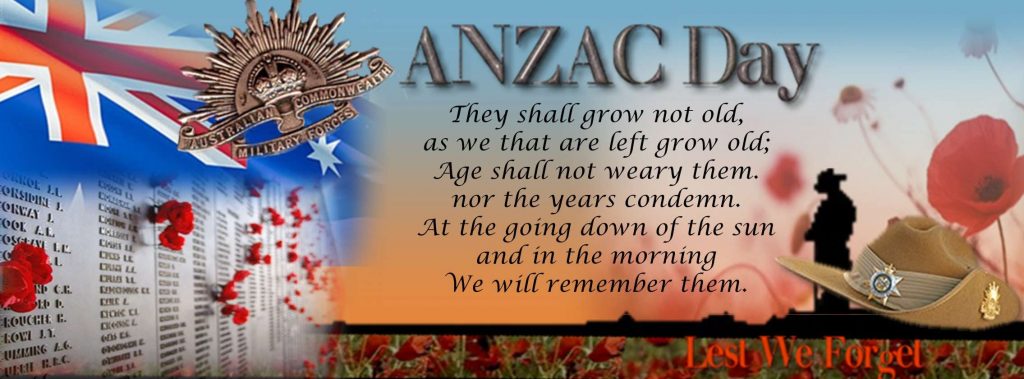
LAST POST
The Last Post is a bugle call that signals the end of the day’s activities on a military site, battlefield or ship. At commemorations, the short tune announces that the duty of the dead is over and they can rest in peace. Pictured below: Portrait of Bugler Harris on horse. Photo credit: Australian War Memorial
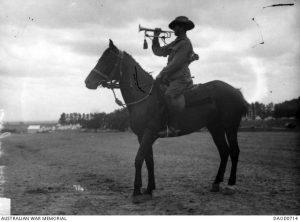
LEST WE FORGET
In commemorations, the phrase ‘lest we forget’ was borrowed from a line in an 1897 Rudyard Kipling poem, Recessional: Lest we forget—lest we forget! We often sing the poem as a hymn at ANZAC Day services for Australians and New Zealanders. ‘Lest We Forget’ is frequently displayed on ANZAC wreaths. The word ‘lest’ is Old English for ‘less that’.

DAWN SERVICE
The idea of a dawn service originates from the army’s ‘Stand-to’ routine. This is when soldiers on active service are woken in the dark to guard against attacks that might come in the half-light of dawn. The timing also links symbolically to the first landing on Gallipoli at dawn which was 4:28am on 25 April 1915. Commemorative services were held as early as 25 April 1916, but the term ‘dawn service’ is not recorded until the 1920s. Early dawn services, such as that held at Albany, Western Australia, in 1923 by the Reverend Arthur White, former padre with the 44th Battalion AIF, were forerunners of the modern tradition. The first official dawn wreath laying service was held at Sydney’s Cenotaph on Anzac Day 1928. A ceremony at dawn soon became the preferred form of remembrance for veterans on ANZAC Day. Pictured below: Cairns RSL Sub Branch and Cairns Regional Council Dawn Service 2019.

GUNFIRE BREAKFAST
Most RSL Sub Branches will host a Gunfire Breakfast following the Dawn Service. Gunfire is a British tradition and was:
… the usual term for the early cup of tea served out to troops in the morning before going on first parade, whenever possible. In the War [WWI] recruits in training always had ‘Gun Fire’ supplied to them, the work before breakfast being found particularly trying. The morning gun in a garrison town suggested the name probably.
(E Fraser and J Gibbons, Soldier & Sailor Words & Phrases, Routledge, London, 1925, p. 113)
It is said that rum laced coffee was served alongside breakfast to give the troops liquid courage to help the soldiers face the coming battles for the day.
MEDALS
Medals were awarded to sailors, soldiers, nurses and airmen for their service and bravery. Veterans often wear their medals to a commemorative event, such as an ANZAC Day. Both female and male veterans wear their medals on their left side. Whilst widows, widowers and other relations of veterans may wear their relative’s medals on the right. A veteran with medals on both sides may wear their own medals on the left and those of a relative on the right. The Victoria Cross is the highest Australian military award for bravery in battle. They create the medals from melted down cannons that Britain captured from Russia during the Crimean War. Since 1900, 100 Australians have received the Victoria Cross.
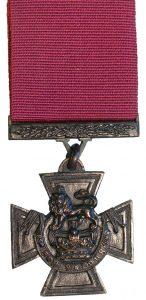
LAYING A WREATH
Traditionally a wreath is laid on memorials or graves in memory of the dead. They might contain a traditional symbol of honour, and rosemary, or they may be native or other flowers. In recent years, it has also become popular to lay a wreath of red poppies—formerly associated with Remembrance Day, 11 November. Any of these wreaths or flowers are acceptable as a gesture of remembrance.
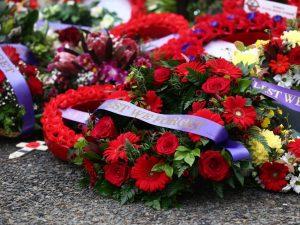
A SPRIG OF ROSEMARY
Rosemary is an ancient symbol of fidelity and remembrance. Rosemary grows wild on the Gallipoli peninsula, where Australians served during the First World War. Sprigs of rosemary are traditionally worn as a symbol of remembrance on ANZAC Day.

TWO-UP
ANZAC Day is the one day of the year that the traditional Australian gambling game of ‘two-up’, may be legally played at venues. It’s thought to have originated from a game called Pitch & Toss (played with a single coin), two-up was played among the poorer English and Irish citizens in the 18th century, brought over by immigrants and convicts – spreading in popularity throughout the goldfields in the eastern colonies by the 1850’s. The game was played extensively by Australian soldiers during WWI and WWII from which came the tradition of it being played on Anzac Day.

KANGAROO FEATHERS
During World War I, some soldiers of the Australian Light Horse decorated their slouch hats with a plume of emu feathers. It was a tradition started by mounted troops in Queensland before the war. Appreciating a practical joke, when asked about their plumes, First AIF light horsemen pulled many legs by replying that they were, in fact, “kangaroo feathers”. Picutred below: Trooper A.C. Wooster, 2nd Light Horse, wearing a large emu plume. Photo credit: Australian War Memorial
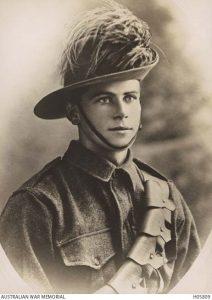
HONOUR ROLLS
Communities normally made honour rolls to remember those from their local area who served or died. Often painted on wooden boards, you’ll find the names of people from a community or a school who served during a war. Sometimes the names of those who died are marked with a cross. Some honour rolls only commemorate the war dead from a particular area. Pictured below: Cairns & District First World War Honour Roll
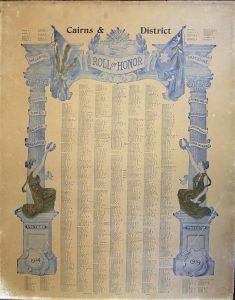
DIGGER
Have you heard the term ‘Digger’ used when referring to veterans? Do you know where the term comes from? The Australian and New Zealand Army Corps (ANZAC) was raised in Egypt in November 1914, months before its famous beach landing on Gallipoli. Later in the war, soldiers who served in the Anzac Corps on Gallipoli – the first ANZACs – proudly wore a brass badge ‘A’ on their uniforms. Australian and New Zealand soldiers quickly became known as ‘diggers’ on Gallipoli because so much of their time was spent digging trenches. Pictured below: Australian soldiers digging trenches during the First World War. Photo credit: Australian War Memorial
